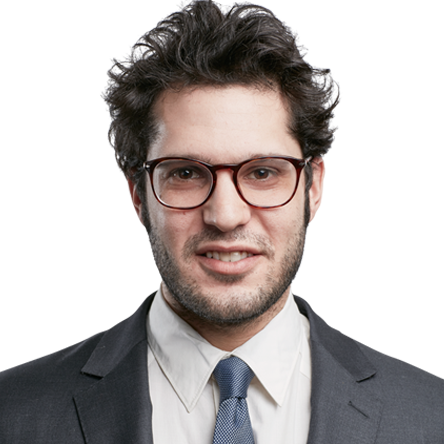After taking centre stage at the biggest tennis stadium in the world, Denis Shapovalov returns home next week ready to be thrust into a new kind of spotlight.
The 18-year-old rising star, who had the tennis world buzzing through the first week of the U.S. Open, will be helping to carry Canada at a crucial upcoming Davis Cup showdown versus India next weekend in Edmonton.
With Milos Raonic out nursing a wrist injury, Shapovalov becomes the centrepiece of a Canadian team that will feature stalwarts like Vasek Pospisil, and Daniel Nestor, along with 22-year-old first-timer Brayden Schnur.
Shapovalov is no stranger to international competition. This will be his third Davis Cup appearance playing for Canada, and he’s travelled with the team before as a practice partner. But needless to say this time everything— the attention, the expectations— will be more than a little different.
That’s what reaching the fourth round of just your second appearance in the main draw of a grand slam tournament will do. In his U.S. Open debut last week, Shapovalov, who was born in Israel, stood under the lights of Arthur Ashe Stadium, swept eight-seed Jo-Wilfred Tsonga, and proceeded to prove that his unthinkable run at the Rogers Cup a few weeks earlier was no fluke.
In Montreal, he was a local wildcard who beat the world number 1 and reached the semifinals. In Flushing Meadows, he was a rising star and unexpected poster boy who had legends like John McEnroe fawning.
It’s a turn of events that many may have seen on the horizon— if perhaps not quite this soon— for a teenager who entered 2017 ranked 250th in the world with a stated goal of finishing the year inside the top 150.
“It’s fantastic, not only for Denis, to have an opportunity to [represent] his country and carry the momentum,” says Davis Cup coach Martin Laurendeau, who was a fixture in the stands during Shapovalov’s Rogers Cup and U.S. Open runs. “He’s been putting in the results that put him in the position to get a crack at the better players in the better tournaments.”
Having been crowned Wimbledon’s junior champion in 2016, reaching as high as second overall in the world junior rankings, Shapovalov was already touted among a promising group as the future of Canadian tennis. That group is headlined by (but not limited to) 17-year-old Felix Auger-Aliassime, who finished last year ranked fourth in the world, and Mississauga, Ont.’s Bianca Andreescu, who reached third.
He left an impression at the Rogers Cup last year when, as a wild card entrant, he beat then-19th-ranked Nick Kyrgios in three sets in Toronto. That victory left Canadian tennis fans waiting to see what he’d have in store in his first full season on the pro tour.
[relatedlinks]
But who could have seen this coming? Let’s briefly recap:
He’s beaten five players in the top 50: Kyle Edmund, Juan Martin del Potro, Adrian Mannarino, Tsonga, and, the biggest fish of them all, Rafael Nadal.
His win over Nadal, in the third round of the Rogers Cup, made him the youngest ever to beat the Spaniard and 15-time grand slam champ at a Masters 1000 level event (and the second-youngest to beat him, period). Shapovalov also became the youngest to reach a semis at a Masters 1000.
In the process, Shapovalov’s ATP world ranking has skyrocketed in a matter of months. He was propelled to number 67 in the world after his Rogers Cup showing, becoming the youngest player in the top 100.
Tennis Canada projects his ranking to reach 51 following his performance in Flushing Meadows, where he became the youngest on the men’s side to reach the 4th round at the U.S. Open since Michael Chang all the way back in 1989.
We’ve been down this road with homegrown talent recently, albeit without the same historical significance. Eugenie Bouchard rocked the boat when she reached the Australian Open semifinals as a teen three years ago. Raonic, who missed the U.S. Open due to injury, has been a fixture in and around the top 10 in recent years after bursting on the scene with his own grand slam run in 2014.
Like Raonic and Bouchard, Shapovalov hopes to be a part of growing the sport across the country. “I want to encourage kids to pick up a tennis racquet instead of a hockey stick,” he said during a U.S. Open press conference, echoing a similar sentiment former NBA star Steve Nash voiced during his breakout.
“It’s uplifting what he’s done,” says Laurendeau of the youngest player on his Davis Cup roster, “just as it was uplifting when Milos made the fourth round of Australian [in 2014] and catching the attention of everyone worldwide. Davis Cup is the only chance to play for your country and [Shapovalov] relishes these moments.”
With matches beginning Sept. 15 in front of what’s sure to be a rowdy home crowd in Edmonton, the stakes couldn’t be higher for the Canadian team. Facing India in a tie-break, Canada must win to remain in the world group stage and have a chance to win it all. Laurendeau expects Shapovalov to benefit greatly from coming fresh off a five-set tournament, the same format he’ll see against India. At the very least, he’ll be carrying more momentum than any player in the matchup.
The Summer of Shapo has been a fun, historic ride. And the timing couldn’t be better.

